What is MicroAmp-Meter?
MicroAmp-Meter is a portable current meter that can measure and plot the current consumption of devices at high speed. MicroAmp-Meter has an automatic shunt-switching mechanism that enables it to measure the dynamic range of current levels ranging from 1uA to 1Amp.
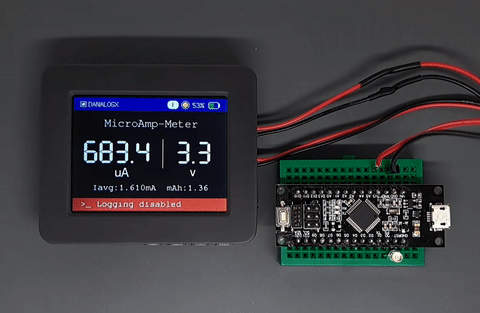
MicroAmp-Meter has inbuilt Wi-Fi and an application that provides a real-time graphical representation of the current in a web browser. Wi-Fi communication is bi-directional and can also allow the control of the power cycle remotely. MicroAmp-Meter displays waveforms of current over time, like an oscilloscope over Wi-Fi.
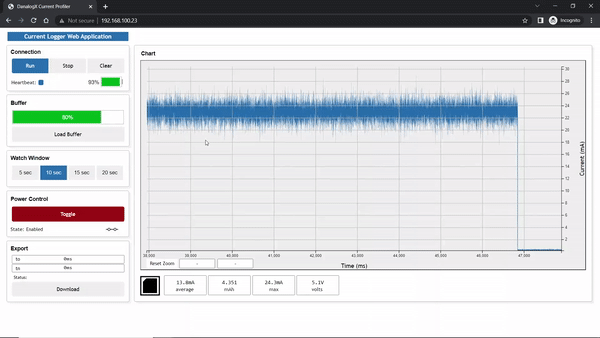
MicroAmp-Meter also has a micro SD card slot and logging capability. It can log several parameters for more than 12 hours so that you can measure the current profile of the device over the long term for field testing.
Why MicroAmp-Meter?
Auto Ranging
MicroAmp-Meter has an automatic shunt switching mechanism that accurately measures electrical current from microamps to amps range. This wide range allows accurate and precise current measurement for embedded devices.
High Sampling Rate
MicroAmp-Meter has a high ADC sampling rate and core running at 80MHz. It measures current and voltage 4000 times per second which allows it to capture RF and other short events effectively.
Low Burden Voltage
Most current meters have a significant burden voltage which affects the actual voltage delivered to the device under test. MicroAmp-Meter has a max voltage drop of 35 mV at all shunt ranges, which ensures proper operation of your target device.
Wireless Current Monitoring
Wi-Fi-based current monitoring allows you to get rid of USB cables, so that you can monitor the current performance of the device under test over a mobile phone, tablet, or PC. This also allows you to control your device remotely for Hardware-in-the-loop testing.
Portable
MicroAmp-Meter is super small that can fit in your pocket. It has a battery life of more than 12hrs (depending on the type of usage). A handy tool that allows you to test your device anywhere at any time.
Affordable
MicroAmp-Meter is affordable which makes it budget-friendly for students and hobbyists. This price tag allows every developer to have that at their desk.
How it works?
MicroAmp-Meter has dual coreESP32 running at 80Mhz. Each core is pinned to a separate task in RTOS. The primary core of ESP32 is responsible for reading analog data from external ADC, calculating current, and switching shunts accordingly. Dedicating the physical core to shunt switching makes the switching happens in less than 200 microseconds. The secondary core is responsible for handling LCD, voltage, battery SOC, micro SD card, and Wi-Fi functionalities. Overcurrent protection is handled by software. It is implemented with the highest software priority to execute the routine in less than 150 microseconds.

Features Highlight
- Operating range:
- 1.8V - 12.0V
- upto 1000mA
- Three shunt stages:
- 0 - 1000uA
- 1 - 300mA
- 300 - 1000mA
- Low burden voltage (max 30mV):
- Range 1: 30µV/µA
- Range 2: 100µV/mA
- Range 3: 30µV/mA
- Ultra-fast auto shunt switching (in less than 200 microseconds) without any glitching
- Voltage over range and overload protection
- Hardware low pass filter and software butterworth filter
- 2.4 inch TFT provides the best user experience UI design
- 1500mAh LiPo battery provides long life
- Fast charging rate up to 0.6c. Battery charging time less than 2 hours
- MAX17048G fuel gauge provides accurate battery SOC
- Buzzer for measured voltage over range indication, overload indication and Low-battery indication
- ESP32 dual core controller with built in WebSocket server application for current profiling
- Parameters:
- Current
- Average Current
- mAh
- Voltage
- Battery SOC
- Output control button to disconnect the load from a power source with the indication of LED
- TFT brightness control button
- Dedicated button for SD Card logging
- Dedicated button for turning on Wi-Fi and establishing a connection to...

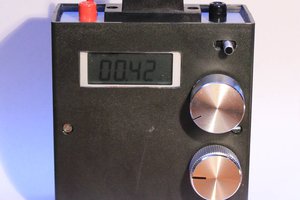
 Yann Guidon / YGDES
Yann Guidon / YGDES
 lion mclionhead
lion mclionhead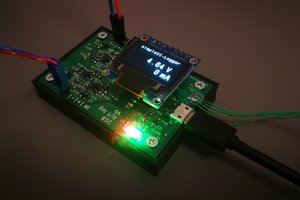
 Shuo Cao
Shuo Cao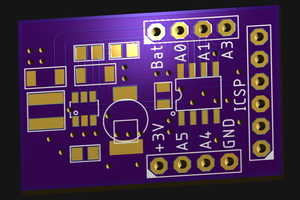
 Ted Yapo
Ted Yapo
MicroAmp-Meter is live on Kickstarter.https://www.kickstarter.com/projects/microampmeter/microamp-meter?ref=creator-nav